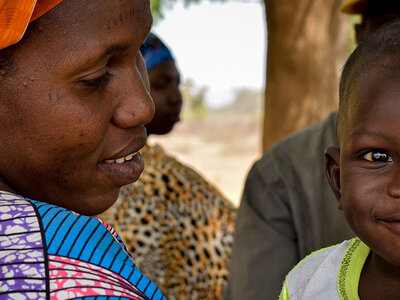Mali
- 1.5 million
- people (6% of population) in acute food insecurity
- 378,000+
- people are internally displaced
- Nearly 1 in 4 children
- under 5 suffers from acute malnutrition
Mali is a vast, land-locked country in the heart of the Sahel region. With social indicators among the lowest in the world, the country ranks 188 out of 193 in UNDP’s 2023 Human Development Index. It faces serious challenges in achieving Sustainable Development Goal 2 on Zero Hunger and improving nutrition.
The cumulative effects of armed conflict, widespread insecurity and periodic floods and drought have contributed to a progressive deterioration of livelihoods in the country.
Agriculture – mainly in the form of subsistence production – represents 80 percent of employment. However, land degradation, lack of fertilizers, post-harvest losses due to poor storage and processing capacity, and limited access to markets contribute to smallholder farmers suffering from higher-than-average poverty rates.
What the World Food Programme is doing in Mali
-
Crisis response
-
WFP reaches shock and crisis-affected populations with food or cash emergency assistance to save lives and protect livelihoods. WFP responds to large-scale crises, mainly linked to climate and conflict, but also to seasonal shocks.
-
School feeding
-
Nutrition
-
Resilience
-
Capacity strengthening
-
Logistics
Mali news releases
Go to pagePartners and donors
Find out more about the state of food security in Mali
Visit the food security analysis pageContacts
Office
Badalabougou Est, Rue 31, Porte 26 – BP120 – Bamako – Mali
Bamako
Mali







